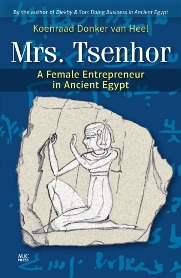| Main » Ad Board » ДРЕВЕН ЕГИПЕТ И АФРИКА » Икономика, стопанство и търговия |
| 05.07.2017, 08:25 | |
Биографична монография с любопитен сюжет - разказ за живота на забележителна жена-бизнесмен, извоювала самостоятелно с успешни сделки своето място и тежест в обществото. Госпожа Дженхор живе в преломната епоха когато настъпва краят на Късното царство и владетелите на Саис, страната е завладяна от Ахеменидска Персия (VI-V в. пр. н.е.), но бунтове и размирици я разтърсват непрекъснато. Въпреки трудните времена обаче, деловата дама от Карнак съумява да създаде процъфтяващо семейно предприятие, занимващо се първоначално (наследения от баща ѝ бизнес) с подсигуряване приношения за гробниците от Тиванския некропол на западния бряг на Нил, но разширило впоследствие дейността си със селскостопанска ферма, търговия с роби и др. Най-близкият ѝ сътрудник е нейният втори съпруг Псенес, но дори и той е пределно наясно кой е босът във фирмата. - на английски език, от MEGA формат PDF, файлът не е архивиран.Сваляне с ляв бутон (downloading by left button) и после през бутона Download through your browser.
| |
| Views: 1599 | Placed till: 05.08.2017 | Rating: 0.0/0 | |

